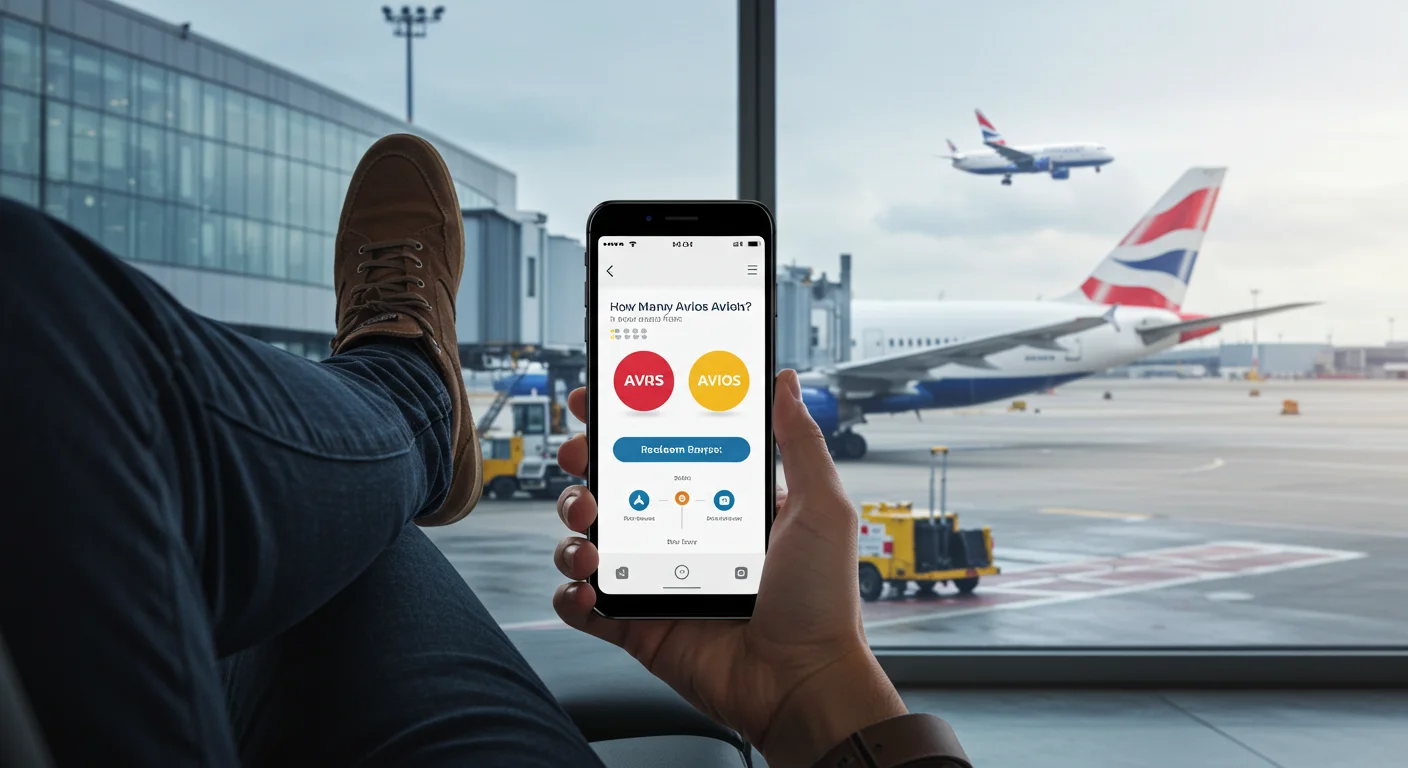Master Your European Journey with Strategic Packing Essentials
What to Pack for Europe Trip : Embarking on a Europe trip can be overwhelming, especially when you’re staring at an empty suitcase wondering what essentials will make or break your adventure. Whether you’re planning your first European escapade or you’re a seasoned traveler looking to perfect your packing strategy, knowing exactly what to pack for Europe is crucial for a seamless journey across this diverse continent.
Every year, millions of travelers face the same dilemma: overpacking leads to hefty baggage fees and uncomfortable lugging, while under packing leaves you scrambling for essentials in foreign countries. According to the USA Travel Association, proper packing preparation can reduce travel stress by up to 60% and save travelers an average of $200 per trip on unnecessary purchases abroad.
This comprehensive guide will transform your European packing approach from chaotic to systematic, ensuring you’re perfectly equipped for whatever your European adventure throws your way. From the cobblestone streets of Prague to the beaches of Santorini, we’ll cover every essential item, seasonal considerations, and insider tips that will make your Europe trip unforgettable for all the right reasons.
Essential Clothing for Your European Adventure
Base Layer Fundamentals
When planning what to pack for Europe, your clothing foundation should prioritize versatility and comfort. European weather can be unpredictable, making layering your secret weapon for any successful Europe trip.
Core clothing essentials include:
- Moisture-wicking undergarments: European summers can be surprisingly humid, especially in cities like Rome or Athens. Invest in 4-5 pairs of high-quality, quick-dry underwear and moisture-wicking undershirts.
- Comfortable walking shoes: Europeans walk significantly more than Americans, with the average tourist covering 12-15 miles daily. Pack one pair of broken-in sneakers and one pair of dressier walking shoes for evening activities.
- Versatile pants and shorts: Dark-colored jeans or travel pants work excellently for most European destinations. Pack 2-3 pairs of comfortable pants and 1-2 pairs of shorts for warmer climates.
- Adaptable tops: Bring 5-7 tops that can transition from day to night. Neutral colors like navy, black, and white mix and match effortlessly while helping you blend in with European fashion sensibilities.
Seasonal Clothing Considerations
Spring (March-May) Packing Strategy: European spring weather remains notoriously unpredictable. Pack layers including a light raincoat, sweaters, and both short and long-sleeved shirts. This season demands flexibility as temperatures can swing from 45°F in morning to 70°F by afternoon.
Summer (June-August) Essentials: Summer Europe trip packing should focus on breathable fabrics and sun protection. Linen and cotton clothing work best, while a light cardigan handles air-conditioned museums and evening breezes. Don’t forget a wide-brimmed hat and sunglasses for Mediterranean destinations.
Fall (September-November) Preparations: Fall European travel requires transitional pieces. Pack medium-weight sweaters, a waterproof jacket, and closed-toe shoes. This season offers fewer crowds and beautiful foliage, making it ideal for air travel deals.
Winter (December-February) Necessities: Winter European packing demands serious warmth. Bring thermal layers, waterproof boots, heavy coats, gloves, and warm hats. Nordic countries and Alpine regions require additional insulation and cold-weather gear.
Cultural Dress Considerations
European dress codes tend to be more formal than American casual wear. When visiting religious sites, conservative clothing is mandatory. Pack at least one modest outfit covering shoulders and knees for cathedral visits and formal dining experiences.
Key cultural clothing tips:
- Avoid athletic wear outside of gym contexts
- Choose darker colors over bright, tourist-identifying clothing
- Invest in quality fabrics that maintain their appearance after multiple wears
- Pack one nice outfit for upscale restaurants and cultural events
Technology and Electronics Must-Haves
Power and Connectivity Solutions
European electrical systems differ significantly from American standards, making power adapters absolutely essential for any Europe trip. The official US travel recommendations emphasize bringing universal adapters that work across multiple European countries.
Essential electronic items:
- Universal power adapter: European outlets use different plug types (Type C, E, F, G) depending on the country. A universal adapter with USB ports saves space and provides multiple charging options.
- Portable power bank: European cities involve extensive walking and sightseeing, draining phone batteries quickly. A 20,000mAh power bank ensures your devices stay charged throughout long exploration days.
- Smartphone with international plan: Modern smartphones serve as cameras, maps, translators, and communication tools. Contact your carrier about international roaming plans or consider European SIM cards for extended stays.
- Backup charging cables: Pack extra charging cables in your carry-on bag. European electronics stores may not carry cables compatible with American devices.
Photography and Documentation
Camera equipment considerations:
- Lightweight camera: While smartphones take excellent photos, a compact camera with good zoom capabilities captures distant architectural details and landscapes better.
- Extra memory cards: European photography opportunities are endless. Pack multiple high-capacity memory cards rather than relying on cloud storage with potentially limited WiFi.
- Waterproof phone case: European weather can change quickly, and waterproof protection saves expensive devices from unexpected rain showers.
Navigation and Communication Tools
Digital navigation essentials:
- Offline maps: Download offline maps for each destination city before departure. European data roaming can be expensive, and offline maps work without internet connectivity.
- Translation apps: Download translation apps supporting multiple European languages. Google Translate’s camera feature translates signs and menus in real-time.
- Travel apps: Install city-specific apps for public transportation, restaurant recommendations, and local events.
Health and Safety Essentials
Medical Preparations
Europe trip health preparations should begin weeks before departure. The USA Travel Association recommends comprehensive medical planning for international travel, especially considering European healthcare systems differ from American medicine.
Essential health items:
- Prescription medications: Pack a 30-day supply of all prescription medications in original containers. Bring copies of prescriptions with generic drug names, as European brand names may differ.
- Basic first aid kit: Include band-aids, antiseptic wipes, pain relievers, anti-diarrheal medication, and any personal medical supplies. European pharmacies may not carry familiar American brands.
- Health insurance documentation: Bring proof of travel health insurance and emergency contact information. Many European countries require proof of medical coverage for visa applications.
- Vaccination records: Some European destinations recommend specific vaccinations. Check CDC requirements for each country on your itinerary.
Personal Safety Items
Security essentials for European travel:
- Money belt or hidden wallet: European cities have skilled pickpockets targeting tourists. Distribute cash and cards across multiple secure locations.
- Copies of important documents: Make photocopies of passport, visa, driver’s license, and insurance cards. Store copies separately from originals.
- Emergency contact list: Include embassy contact information, travel insurance numbers, and emergency contacts in both America and Europe.
- Portable door lock: Additional security for budget accommodations or Airbnb rentals. Lightweight door locks provide peace of mind in unfamiliar locations.
Practical Travel Accessories
Luggage and Organization
Luggage selection strategy: Choosing appropriate luggage significantly impacts your Europe trip experience. European cobblestone streets, narrow staircases, and public transportation systems favor wheeled luggage over backpacks for most travelers.
Optimal luggage setup:
- Medium-sized wheeled suitcase: 24-26 inch suitcases fit most European airline carry-on requirements while providing adequate packing space.
- Packing cubes: Organize clothing by category and compress items efficiently. Packing cubes make hotel unpacking and repacking much faster.
- Day backpack: A comfortable day pack carries water, snacks, camera, and shopping purchases during daily explorations.
Money and Financial Tools
Financial preparation essentials:
- Multiple payment methods: Bring at least two different credit cards from different companies. Notify banks about travel dates to prevent fraud holds.
- Cash reserves: European countries increasingly use cashless payments, but small vendors and tips still require cash. Carry €200-300 in small bills for immediate needs.
- Travel money card: Prepaid travel cards offer better exchange rates than airport currency exchanges and provide spending control.
Comfort and Convenience Items
Travel comfort essentials:
- Neck pillow and eye mask: European flights often involve multiple connections, and proper rest accessories improve arrival energy levels.
- Reusable water bottle: European tap water is generally safe and high-quality. A reusable bottle saves money and reduces environmental impact.
- Laundry supplies: Pack travel-sized laundry detergent and a clothesline for washing clothes in hotel rooms. This reduces packing requirements for longer trips.
- Snacks from home: Bring familiar snacks for long travel days and emergency hunger situations. European snack foods may not match American preferences.
Regional Packing Variations
Mediterranean Europe Specifics
Southern European considerations: Mediterranean countries like Italy, Spain, and Greece require specific packing adjustments. Summer temperatures regularly exceed 90°F, while coastal areas experience strong winds and occasional storms.
Mediterranean packing essentials:
- High SPF sunscreen: European sun intensity is often underestimated by American travelers. Pack SPF 30+ sunscreen and reapply frequently.
- Lightweight, breathable clothing: Linen and cotton fabrics work best in Mediterranean heat. Avoid synthetic materials that trap heat and moisture.
- Swim gear: Even city breaks often include beach opportunities. Pack a compact swimsuit and quick-dry towel.
- Insect repellent: Mediterranean evenings bring mosquitoes, especially near water. Pack effective insect repellent for comfortable outdoor dining.
Northern European Preparations
Nordic and Baltic considerations: Northern European countries like Denmark, Sweden, and Norway require different packing strategies focused on weather protection and layering systems.
Northern European essentials:
- Waterproof outer layer: Rain is common year-round in northern Europe. Pack a high-quality rain jacket and waterproof pants.
- Warm accessories: Even summer evenings can be cool. Bring a warm hat, gloves, and scarf for temperature drops.
- Sturdy footwear: Northern European terrain often includes rocky coastlines and forest paths. Pack hiking boots or sturdy walking shoes.
Central European Adaptations
Central European packing strategy: Countries like Germany, Austria, and Czech Republic experience varied climates and require versatile packing approaches. These destinations often combine urban exploration with outdoor activities.
Central European must-haves:
- Mid-weight layers: Spring and fall temperatures fluctuate significantly. Pack sweaters and light jackets for temperature changes.
- Formal attire: Central European cities have dress codes for restaurants and cultural events. Pack one nice outfit for upscale activities.
- Comfortable walking shoes: Central European cities feature extensive pedestrian areas and historic districts requiring substantial walking.
Transportation and Travel Logistics
Air Travel Considerations
Airline packing regulations: Understanding European airline policies prevents costly surprises and travel delays. The world travel market has standardized many international flight requirements, but specific regulations vary by carrier and destination.
Air travel packing tips:
- Carry-on size limits: European airlines often have stricter carry-on size requirements than American carriers. Check specific airline policies before packing.
- Liquid restrictions: The 3-1-1 rule applies to European flights. Pack toiletries in containers under 3.4 ounces and place them in clear, quart-sized bags.
- Weight limitations: European airlines frequently charge for overweight bags. Weigh luggage before departure and leave room for souvenirs.
Ground Transportation Needs
European transportation packing: European transportation systems are efficient but require specific packing considerations. US travel habits don’t always translate directly to European transportation needs.
Transportation-specific items:
- Portable luggage scale: European train weight limits and airline restrictions make a portable scale invaluable for avoiding excess fees.
- Luggage locks: European hostels and train travel benefit from luggage security. TSA-approved locks work throughout Europe.
- Comfortable walking shoes: European cities prioritize pedestrian traffic. Quality walking shoes prevent fatigue and foot problems.
Seasonal Packing Strategies
Spring European Travel
March-May packing approach: European spring offers unpredictable weather patterns requiring flexible packing strategies. Temperature variations between morning and evening can exceed 30°F, demanding layering systems.
Spring essentials:
- Layering pieces: Pack cardigans, light sweaters, and jackets that can be added or removed as temperatures change.
- Waterproof footwear: Spring rain is common across Europe. Waterproof shoes or boots prevent soggy feet and discomfort.
- Umbrella: A compact, sturdy umbrella handles sudden spring showers without taking excessive luggage space.
Summer European Adventures
June-August packing focus: Summer European travel demands heat management and sun protection. Popular destinations experience high temperatures, humidity, and intense sun exposure.
Summer packing priorities:
- Cooling accessories: Cooling towels, portable fans, and cooling gel packs help manage heat during sightseeing.
- Sun protection: Wide-brimmed hats, UV-protective clothing, and high-SPF sunscreen prevent sunburn and heat exhaustion.
- Hydration supplies: Reusable water bottles and electrolyte packets maintain hydration during hot weather exploration.
Fall European Experiences
September-November strategy: Fall European travel offers ideal weather conditions with fewer crowds and beautiful scenery. Temperature drops require transitional clothing and weather preparation.
Fall packing elements:
- Transitional clothing: Pack pieces that work for both warm days and cool evenings. Layering remains essential for comfort.
- Waterproof gear: Fall rain increases across Europe. Pack waterproof jackets and umbrellas for weather protection.
- Warm accessories: Evenings become cooler, requiring scarves, light gloves, and warm hats for comfort.
Winter European Journeys
December-February requirements: Winter European travel demands serious cold-weather preparation. Northern destinations experience extreme cold, while southern regions remain mild but wet.
Winter packing necessities:
- Insulation layers: Thermal underwear, wool sweaters, and insulated jackets provide necessary warmth for outdoor activities.
- Waterproof boots: Winter precipitation often includes snow and slush. Waterproof, insulated boots prevent cold, wet feet.
- Cold-weather accessories: Warm hats, insulated gloves, and scarves protect exposed skin from harsh winter conditions.
Budget-Friendly Packing Tips
Cost-Effective Packing Strategies
Maximizing value while minimizing costs: Smart packing reduces both travel expenses and luggage weight. Strategic planning prevents unnecessary purchases and reduces baggage fees.
Budget packing approaches:
- Versatile clothing: Choose items that work for multiple occasions and weather conditions. A good jacket serves as outerwear, pillow, and blanket.
- Multi-purpose items: Pack items serving multiple functions. Sarongs work as towels, blankets, and cover-ups.
- Quality over quantity: Invest in fewer, higher-quality items rather than many cheap pieces. Quality items last longer and perform better.
Shopping and Souvenir Considerations
Leaving room for European purchases: European shopping offers unique opportunities for clothing, accessories, and souvenirs. Smart packing leaves room for purchases while avoiding overweight baggage fees.
Shopping preparation tips:
- Pack light initially: Leave 25% of luggage space empty for purchases and souvenirs.
- Bring a foldable bag: Pack a lightweight, foldable duffel bag for additional carry-on space on return flights.
- Consider shipping: For valuable or heavy purchases, international shipping may be more cost-effective than excess baggage fees.
Cultural Considerations and Etiquette
Respecting Local Customs
European cultural sensitivity: Understanding European cultural norms prevents embarrassing situations and shows respect for local customs. Packing appropriate clothing demonstrates cultural awareness.
Cultural packing considerations:
- Conservative clothing: Many European churches and religious sites require modest dress. Pack clothing covering shoulders and knees.
- Formal attire: European restaurants and cultural events often have dress codes. Pack one nice outfit for upscale activities.
- Appropriate footwear: Some European locations prohibit certain shoe types. Research destination-specific requirements.
Blending In Like a Local
Avoiding tourist identification: Dressing like a local enhances safety and cultural experience. European fashion tends to be more understated and formal than American casual wear.
Local fashion adaptation:
- Neutral colors: Europeans favor black, navy, gray, and other neutral tones over bright colors and patterns.
- Quality fabrics: European clothing emphasizes quality over quantity. Pack well-made items that maintain their appearance.
- Minimal logos: Avoid clothing with large logos or brand names that immediately identify you as a tourist.
Final Packing Checklist and Tips
Pre-Departure Preparation
Final packing verification: A systematic approach ensures nothing important is forgotten while avoiding overpacking. Create a comprehensive checklist covering all essential categories.
Essential packing checklist:
- Documents: Passport, visas, travel insurance, driver’s license, health insurance cards
- Money: Cash, credit cards, travel money card, emergency contact information
- Clothing: Weather-appropriate clothing, comfortable shoes, formal attire, undergarments
- Electronics: Phone, chargers, power adapters, camera, portable battery
- Health items: Prescription medications, first aid kit, sunscreen, insect repellent
- Comfort items: Travel pillow, eye mask, earplugs, entertainment materials
Last-Minute Considerations
Departure day preparation: Final preparations ensure smooth departure and arrival. Double-check all essential items and confirm travel arrangements.
Final steps:
- Weigh luggage: Confirm baggage weight limits to avoid excess fees
- Check weather: Verify destination weather forecasts for last-minute packing adjustments
- Confirm flights: Verify departure times and gate information
- Emergency preparations: Ensure emergency contacts have travel itinerary and contact information
Frequently Asked Questions
Q: How much should I budget for packing essentials for a Europe trip? A: Essential packing items typically cost $200-400, including quality luggage, universal adapters, travel accessories, and clothing upgrades. Investing in quality items saves money long-term and improves travel experience.
Q: Should I pack differently for Western versus Eastern Europe? A: Yes, Eastern European destinations often require more conservative clothing and cash reserves. Western European countries have more relaxed dress codes and widespread card acceptance. Research specific destination requirements.
Q: How do I pack for multiple European climates in one trip? A: Focus on layering systems and versatile pieces. Pack base layers, insulating layers, and waterproof outer layers that can be combined for different weather conditions. Neutral colors mix and match easily.
Q: What items should I definitely NOT pack for Europe? A: Avoid packing excessive electronics, multiple pairs of shoes, bulky toiletries, valuable jewelry, illegal items, and clothing with offensive graphics or political messages.
Q: How early should I start packing for my Europe trip? A: Begin packing preparations 2-3 weeks before departure. This allows time for purchasing missing items, breaking in new shoes, and adjusting packing strategies based on weather forecasts.
Conclusion: Your European Adventure Awaits
Mastering the art of packing for your Europe trip transforms potential travel stress into excited anticipation. By following this comprehensive guide, you’re equipped with the knowledge and strategy needed to pack efficiently, travel comfortably, and explore Europe with confidence.
Remember that successful European packing balances preparation with flexibility. Pack essentials while leaving room for spontaneous purchases and unexpected weather changes. The goal isn’t to pack for every possible scenario but to prepare for the most likely situations while maintaining adaptability.
Your European adventure represents more than just a vacation—it’s an opportunity to experience diverse cultures, create lasting memories, and challenge yourself in new environments. Proper packing ensures you’re ready to embrace every moment without worrying about forgotten essentials or uncomfortable situations.
Ready to start your European journey? Share your packing experiences and tips in the comments below. What essential items would you add to this guide? Help fellow travelers by sharing your hard-learned packing wisdom and European travel discoveries.
For more comprehensive European travel planning resources, explore our complete destination guides and connect with our travel community. Your perfect European adventure starts with perfect packing—now go make those travel dreams a reality!







